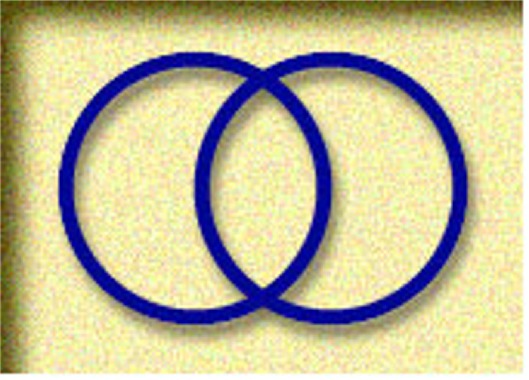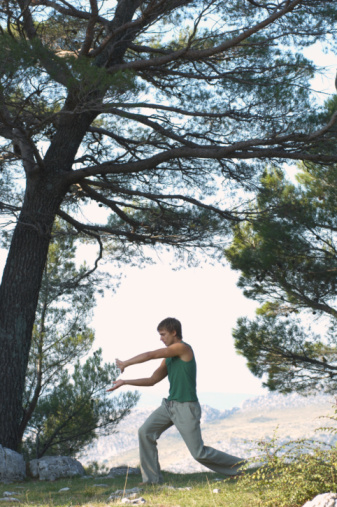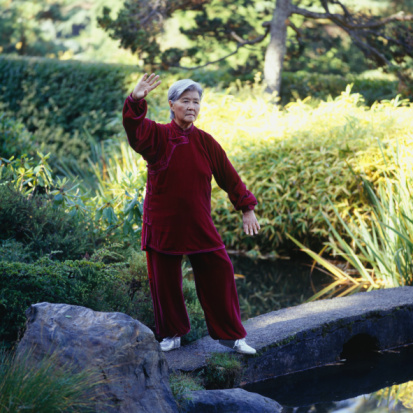The Union of Opposites - the Mandorla / Visica Piscis / Flower of Life
(some text from: http://www.kyrie.com/ symbols/ mandorla.htm)
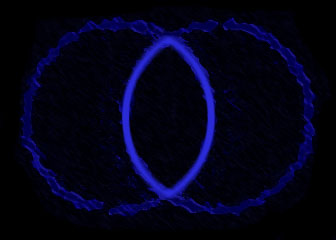
The Mandorla is an ancient symbol of two circles coming together, overlapping one another to form an almond shape in the middle. (Mandorla is the Italian word for almond.) The Mandorla is also known as the "Vesica Piscis", symbolizing the interactions and interdependence of opposing worlds and forces. The Vesica Piscis is the archetypal expression of two-ness. It is another symbol that expresses growth by division.
It is also part of the Flower of Life in Sacred Geometry (shown below).

Although the symbol has its origins long before the Christian era, the early Christians used the symbol as a method to describe the coming together of heaven and earth, between the divine and human. Buddhists use the symbol as well.
The circles symbolise interacting but complementary opposites. The space within the overlap is the place in which we are called to " remain ", the "liminal space". This is the place where you arrive after you leave one room and have not yet entered another. In this place, you are living on the threshold and this requires faith. All transformation takes place in liminal space.
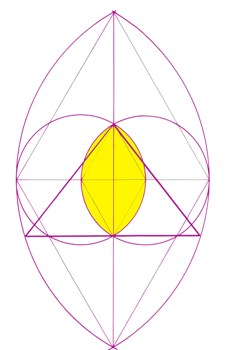
If we deny one of the opposites (e.g., our shadow, death, etc.), the circles may only touch; they do not intersect. In this situation, we are polarised, out of balance. Perhaps too when we become wholly integrated, the overlap is total and there appears to be only one circle (for awhile anyway).
The Mandorla depicts the union of apparent opposites, the same union of which the mystics speak. Our ego-consciousness divides reality into subject and object, whereas out true self experiences unity and harmony; Thomas Merton speaks frequently about this (in his book The New Man ). In the Mandorla both of these aspects coincide.
Nicholas of Cusa speaks of the coincidence of contradictories or coincidentia oppositorum :
The coincidence of opposites is a certain kind of unity perceived as coincidence, a unity of contrarieties overcoming opposition by convergence without destroying or merely blending the constituent elements. Although in once sense not obliterated, in another the constituent elements shed their multiple, differentiated status. Examples would include the coincidence of rest and motion, past and future, diversity and identity, inequality and equality, and divisibility and simplicity.... coincidence does not really describe God. Rather it sets forth the way God works, the order of things in relation to God and to each other, and the manner by which humans may approach and abide in God. God is beyond the realm of contradictories. God ... preceded opposites, is undifferentiated, not other, incomparable, and without opposite, precedes distinctions, opposition, contrariety, and contradiction.
(Definition by H. Lawrence Bond in Nicholas of Cusa: Selected Spiritual Writings , p. 366)
Nicholas of Cusa also writes:
"I have found the place where one can find Thee undisguised. It is surrounded by the coincidence of opposites. This is the wall of Paradise in which Thou dwellest. Its gate is guarded by the “highest spirit of reason”. Unless one overcomes it, the entrance will not open. On the other side of the wall of the coincidence of opposites one can see Thee, on this side never." (Jager, p.77)
To step into the Mandorla is to move beyond "either-or" thinking - even beyond ideas of common ground or compromise - and stand in the tension of opposites long enough for something new to emerge. In the realm of the Mandorla, the whole truly yields something greater than the sum of its parts, opening doors of possibility, discovery, and creativity.
